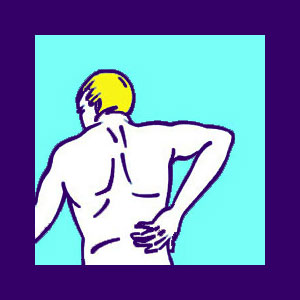
Sacroiliac exercises are some of the most common treatment options for diagnosed sacroiliac joint pain. Patients can perform these exercises alone or with the assistance of a professional physical therapist. There is considerable controversy about the validity of most diagnosed cases of SI pain. Furthermore, taking for granted that the diagnosis is correct, the question often remains…
Will exercises do anything to provide sacroiliac relief?
This article will explore the use of exercises to treat SI joint symptoms and why the therapy may or may not help patients to find lasting relief.
Sacroiliac Exercises and Stretches
Pain in the sacroiliac region is most often blamed on too much or too little movement in the actual joint. This is called sacroiliac joint dysfunction and involves the ligaments which help to hold the joint together. Regardless whether these ligaments are theorized to be too taut or too lax, treatment is usually identical in application:
Exercises are designed to either strengthen and tighten up the sacroiliac joint or loosen and relax it.
Stretches are prescribed to firm up ligaments or to loosen overly tight ligaments. It seems odd and illogical that two diametrically opposed causes will share the exact same treatment method.
Even stranger is the fact that identical exercises are generally used for both causative theories of pain. This takes medical nonsensical to a whole new level.
Sacroiliac Exercises Efficacy Theory
Medical science uses physical therapy for almost all musculoskeletal conditions without truly having any concrete idea what this modality is supposed to do. In the case of sacroiliac symptoms, PT is surely indicated for known cases of ligamentous injury or tension issues.
However, what if the source of pain is sacroiliitis? What if the true cause of pain is oxygen deprivation of the nerves and muscles in the SI region? Exercise is also used for these examples of symptomatic syndromes, which makes no sense at all.
In patients with actual arthritic joint activity causing pain, PT can be agonizing and may worsen the deterioration of the internal joint structure in rare cases. In patients with ischemia, temporary relief may be enacted due to increased regional oxygenation of tissues, but no cure will ever come about.
Also, many patients have different structural, disease or infectious explanations for pain which are highly unlikely to respond well to exercise treatment. Keep these facts in mind if you do not see relief in the indicated timeframe.
Results of Doing Sacroiliac Joint Exercises
I am an enthusiastic advocate of virtually all forms of exercise. However, I have less and less confidence in exercise as a specific treatment for most types of back pain. If you are one of the few that actually has true SI joint pain due to poor ligament condition, then exercise might just be the right treatment.
Chances are that your pain is not from your SI joint, regardless of the diagnosis. If you suffer from unresolved SI joint pain and are wondering about your next choice of treatment, let me give you some valuable advice: Stop thinking about treatments and start thinking about the real reason for your pain. You are not getting better because your diagnosis might be incorrect.
As a final point, let me remind you that most SI diagnoses start as something else. Doctors revise the causative theory as treatment fails again and again. They got it wrong before, what makes you think the diagnosis is correct now? Learn the facts. See a new doctor or two. Then you can decide based on more than just one doctor’s highly subjective opinion.





